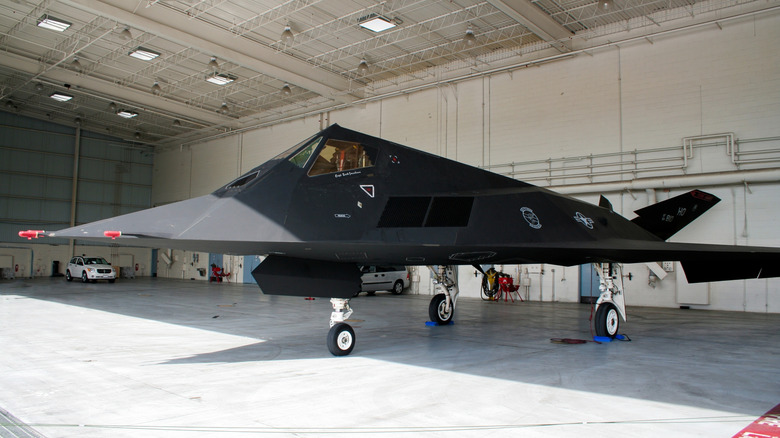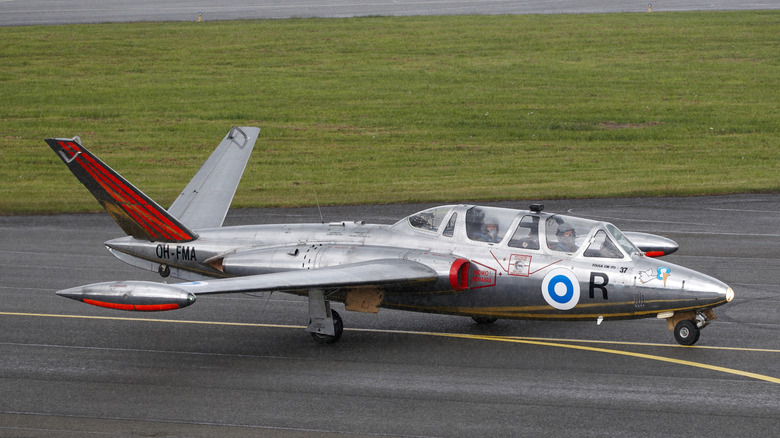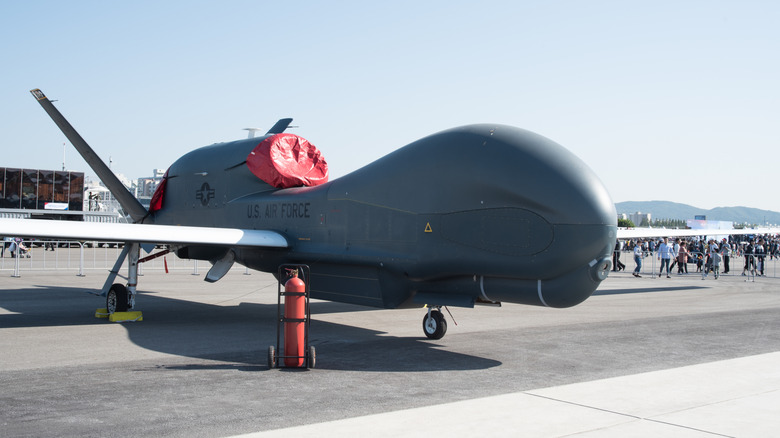Which Military Jets Have A V-Tail And Does It Help Them Fly?
If you picture an aircraft, chances are you will probably think of a traditional two-winged aircraft with one vertical and two horizontal stabilizers at the rear. This is a design concept that has stood the test of time and for good reason — it works. However, it isn't the only configuration to take to the skies. There are a few outliers that refuse to be pigeon-holed into such a staid design and many of these are military aircraft. Among them is the flying wing configuration of which the Northrop YB-49 was an early pioneer and more recently the Northrop B-2 Spirit.
There is another configuration that has been used in military aircraft – the V-tailed design. The V-tail design has been around since 1930, but despite a long history, there are still relatively few planes — either military or civilian — that have incorporated the feature, the Lockheed F-117 Nighthawk is perhaps the most famous example. A useful starting point is to define what we mean when we say V-tail. This can help to avoid confusion as many military jets including the "gold-canopied" F-22 Raptor seem to fit the bill with two oblique vertical stabilizers that resemble a "widened V". However, these planes will also feature horizontal stabilizers. So, to make it onto this list the planes must have a true "V" design, where the only two elements of the rear stabilizer meet in the middle, or so close as makes no difference. Let's have a look at the planes that made the grade.
Military jet aircraft with V-tail designs
The above-noted F-117 Nighthawk is the most famous V-tailed military jet. While pilots described the jet as "not demanding to fly" the plane was too unstable to be flown without computer assistance. This was part of the performance vs. radar signature battle that drove the design, and the V-tail was included for its stealth characteristics rather than aerodynamic performance, so while a V-tail undoubtedly helped it fly, it didn't help it fly very well. But that also wasn't the point.
Stepping a little further back in time, the Fouga Magister may not be as famous as the F-117 but in terms of production numbers, it far surpasses the stealth aircraft. The V-tailed Fouga first flew in 1952 as a trainer for the French Air Force, in all 929 were built and the aircraft was sold to twenty-three countries (as compared to 59 operational F-117s). The V-tail on Magister came from a glider that was fitted with a jet engine for testing and also simplified maintenance and optimized maneuverability. However, while V-tails can reduce drag and weight, they often require complex control systems and don't always improve handling.
Military UAVs - A V-tail renaissance
V-tails have made the odd appearance in aviation, yet never became more than a curiosity or included to fit a particular design brief. The story might have ended there if it wasn't for the rise of the Unmanned Aerial Vehicle (UAV). V-tails are commonly used in UAVs due to their reduced drag, which improves aerodynamic efficiency. Studies show that V-tail designs can lower drag by approximately 7–7.6% compared to conventional tails. Although narrowing the tail area can pose challenges for controllability, the overall design optimizations make V-tails suitable for the specific mission requirements of UAVs. A good example of this in action is the RQ-4 Global Hawk. This V-tailed UAV reconnaissance craft can fly for over thirty hours at high altitudes, with a maximum range of a whopping 14,155 miles. V-tailed UAVs are not restricted to intelligence roles either. China's CASC CH-4 has a maximum range of 2.175 miles and can carry a formidable arsenal including guided bombs and laser-guided missiles. Not something you'd like to meet on a dark night.
Offensive capabilities are not restricted to Chinese UAVs. The General Atomics MQ-9A "Reaper" is an example of this. The Reaper can fly for over 27 hours and carry a payload of over 3,000 pounds. As well as surveillance duties, this payload allows it to carry and deploy various weapons packages. While V-tails never soared in terms of manned military planes, they appear to have found their niche in the age of the drone.


